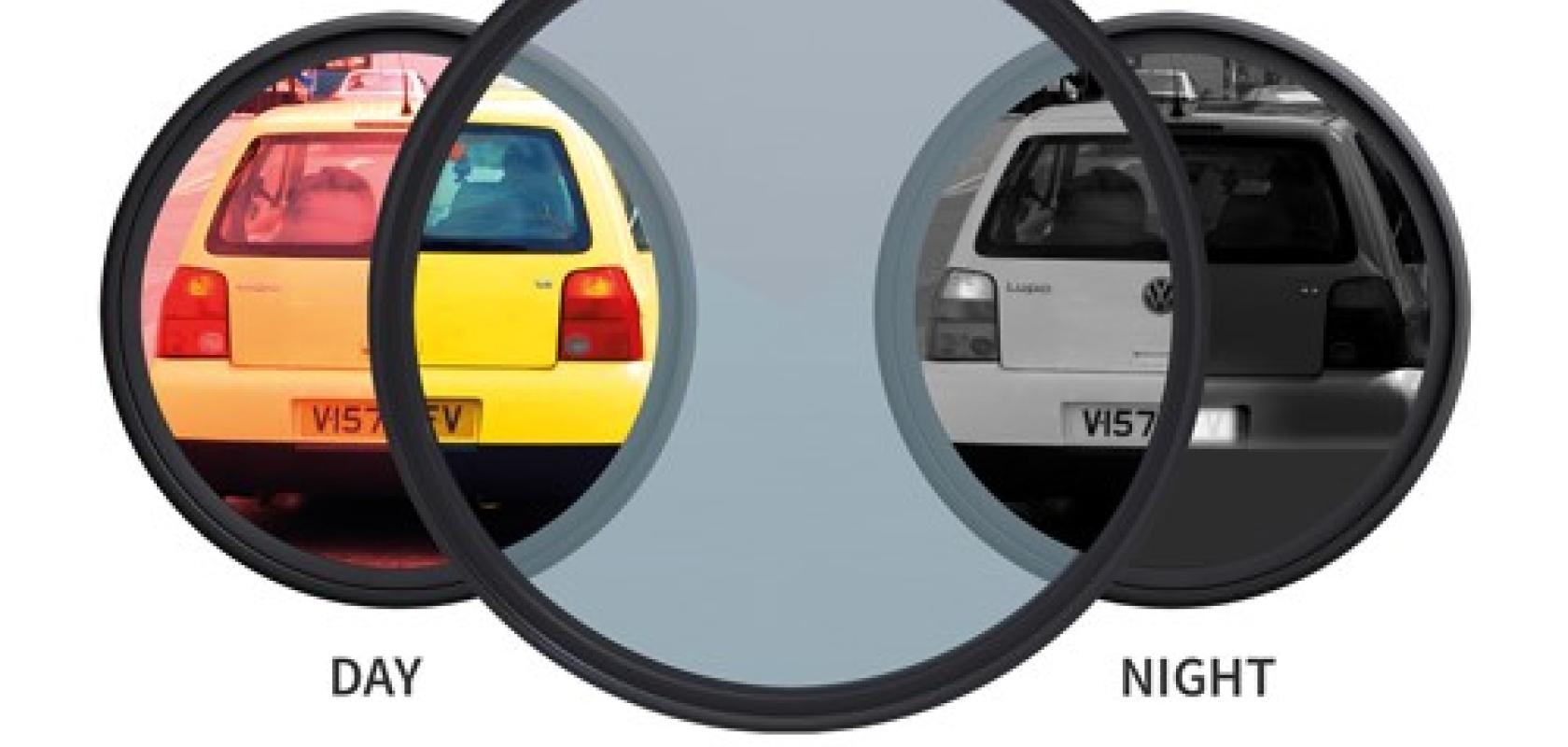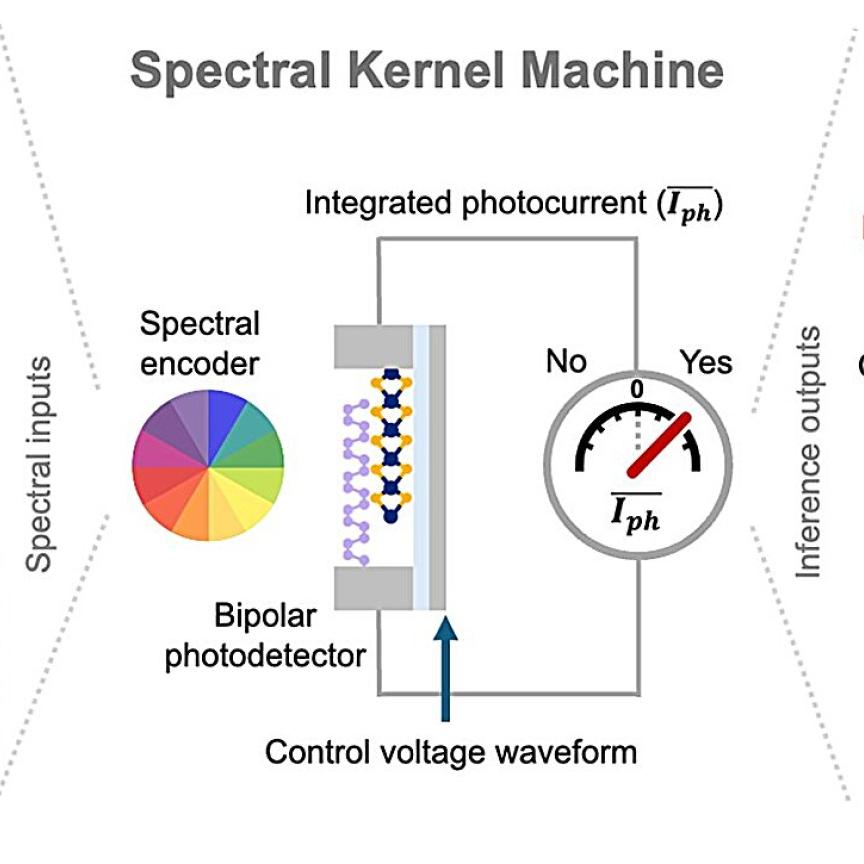Gemma Church explains how MidOpt optical filters improve colour imaging
Whether you want to take the perfect picture or monitor the health of crops, colour cameras are now used in an increasing number of applications. However, the sensitivity of the camera’s sensor and the incoming light source can significantly affect the colour and quality of the information needed to run an application efficiently.
This is where optical filters can help. They produce natural colour rendering, equivalent to what a human eye can see, across a multitude of colour imaging setups. To achieve this, these filters address a range of challenges, including glare and light intensity reductions and exposure regulation.
Midwest Optical Systems (MidOpt) supplies a range of optical filters across multiple industries. Its president, Michael Giznik, said: ‘The use of filters is recommended across all systems because it ensures you’re controlling the lighting conditions. Filters allow only desired wavelengths to enter the system, while filtering out ambient, or interfering, light.’
Accurate colour rendition is a key application area, where a selection of filters is available to block specific wavelengths and address certain issues. When using a colour camera and imaging with white light, for example, the near-infrared portion of the spectrum must be blocked to achieve natural, realistic colour images because, unlike the human eye, colour cameras are sensitive to near-infrared light.
MidOpt supplies a range of short pass and near-infrared cut filters to achieve this. In contrast to near-infrared pass filters, near-infrared cut filters block all or selected near-infrared (and sometimes red) wavelengths to significantly improve image quality and achieve natural, realistic colours. Monochrome cameras can also benefit from near-infrared cut filters, which can fix problems caused by extremely bright lighting conditions.
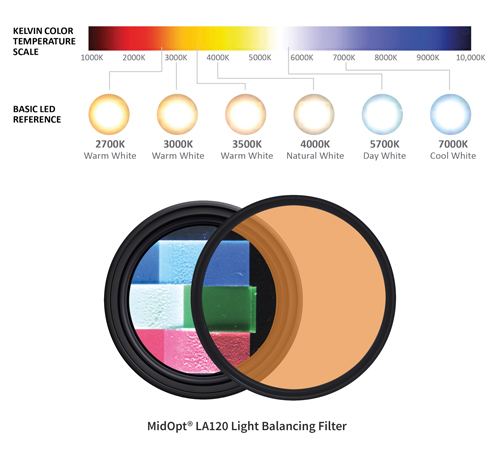
Light balancing filters can also improve colour reproduction, increasing the contrast by correcting the emission spectrum of various light sources. This is also known as controlling the colour temperature. When the colour temperature is high, more blue light exists. When it is low, there’s more red light. When an object is inspected under UV light, for example, more blue light is present, which can distort image colour. A light balancing filter can remove this bluish tint.
Glare is another issue, where light reflected from a shiny surface becomes polarised and the resultant reflected light can distort and block part of the image. To reduce glare, a polarising filter over the lens and a polarising film over the light source can help.
When it comes to exposure control, MidOpt also provides a range of neutral density filters, which reduce light intensity over a specific wavelength range, while also retaining image resolution and reducing depth of field. ‘This is useful in situations where you have too much light saturation, such as welding inspections,’ Giznik explained.
Day/night and agricultural applications
Dual bandpass filters are used for both sunlight-illuminated day and infrared-illuminated night imaging applications. These filters are ‘useful for intelligent traffic solutions, license plate recognition and surveillance applications’, Giznik said. ‘With the use of a day/night dual band filter, you can achieve a natural colour rendition with visible light during the day, while still passing infrared wavelengths for imaging at night – eliminating the need for dual sensors or a filter switching station.’
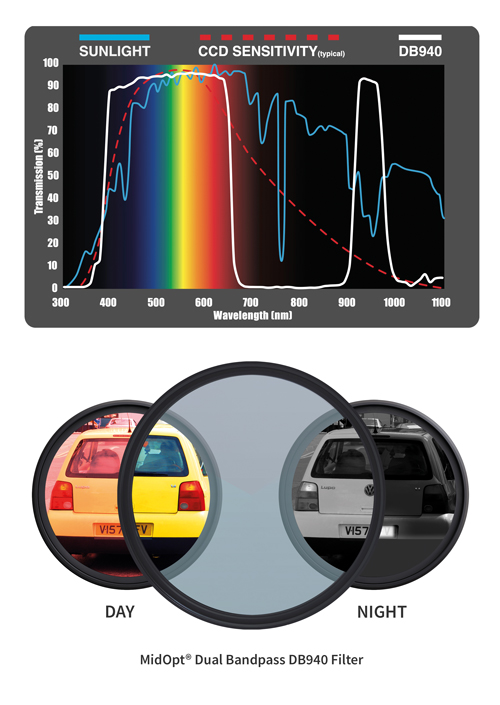
Dual bandpass filters and colour cameras are increasingly used in agricultural and forestry applications for process control, mapping and vegetative health. Giznik said: ‘Gathering data and information is a driving force, so applications like intelligent traffic solutions, surveillance or the NDVI applications – all of which use multi bandpass filters – are growing application areas.’
The Normalised Difference Vegetation Index (NDVI) is a widely used indicator, applied to each image pixel to analyse and differentiate healthy vegetation from stressed vegetation and background information.
These NDVI numbers are found by comparing reflectance differences in the near-infrared and visible spectrum, because actively photosynthesising plants reflect or scatter near-infrared light. When a plant is stressed or dying, photosynthesis slows down or stops, and infrared wavelengths are absorbed.
Giznik said: ‘Multi bandpass filters, including dual and triple band filters, are the main filters used for these applications. The essential components of this setup would be a colour camera, lens, filter and software that will analyse the data [images] that you captured to determine the index ratings.’
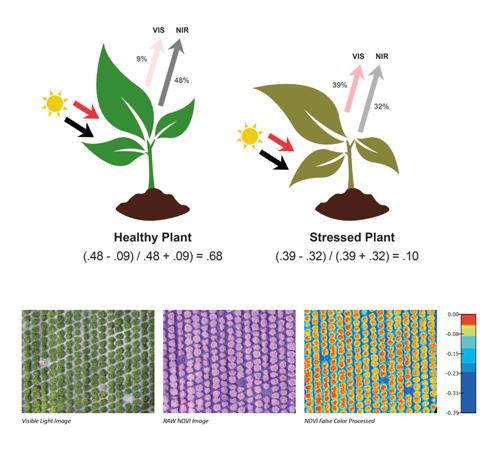
When using two cameras or sensors and appropriate optical filtering, getting accurate red and near-infrared data is straightforward. However, optical filters can reduce the weight and cost of these systems, as Giznik explained: ‘Typically, NDVI applications use very expensive multispectral cameras to gather the data needed to determine the health of vegetation. However, using multi bandpass filters with standard digital cameras, along with the NDVI software, can help you achieve the same or similar results.’
As agricultural experts start to adopt inexpensive unmanned aerial vehicles and small, lightweight cameras for monitoring applications, this is an important step forward. Such systems are usually designed for the consumer market and not with NDVI measurements in mind, often with pool colour band separation and a limited dynamic range. The inclusion of filters makes such low-cost devices suitable for these applications, democratising colour imaging techniques for small-scale farmers and smaller organisations.

